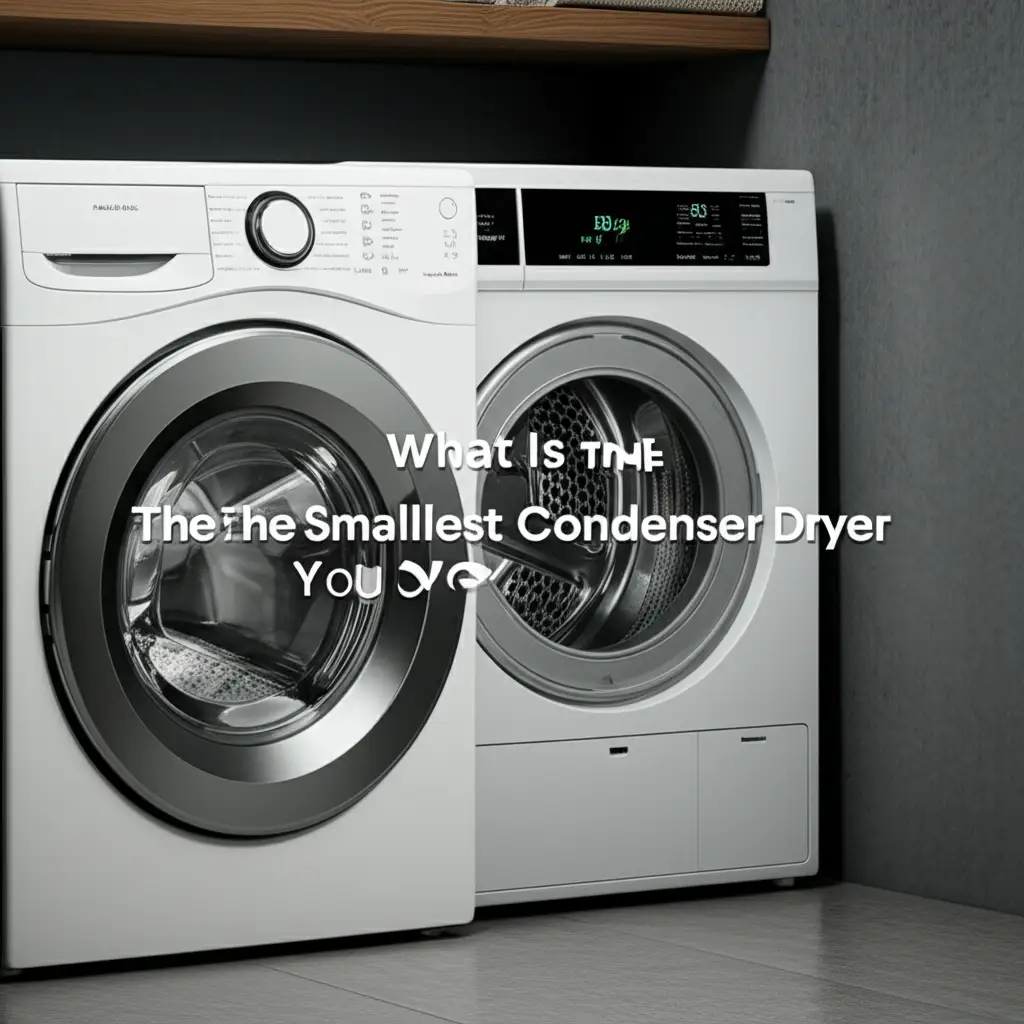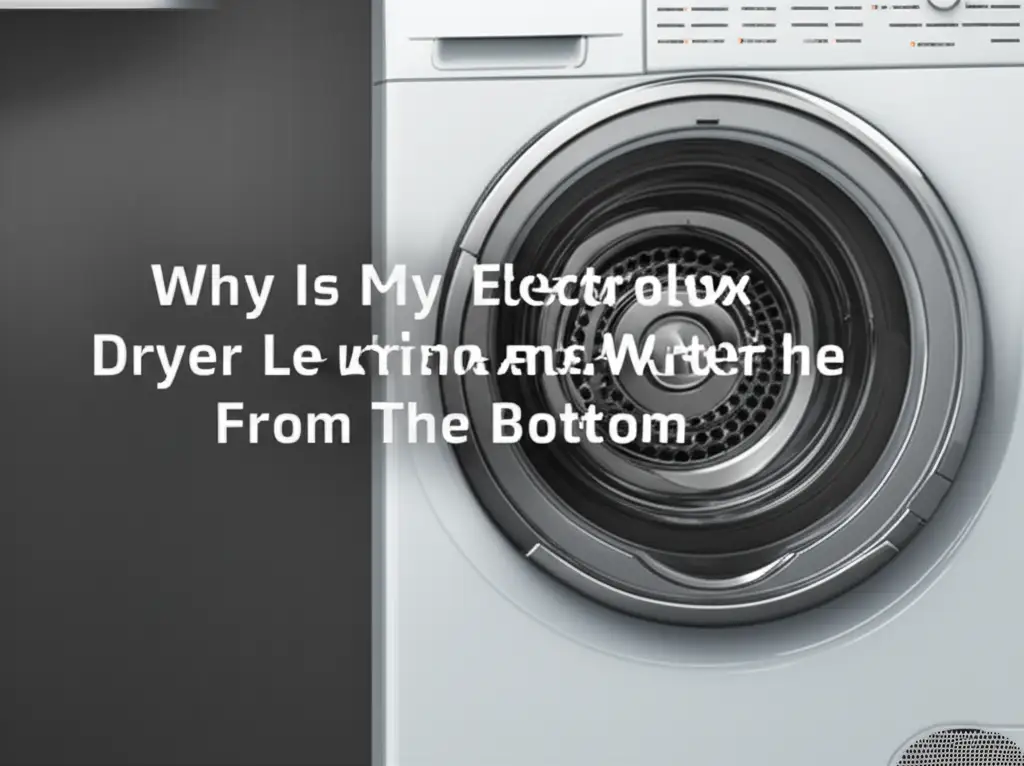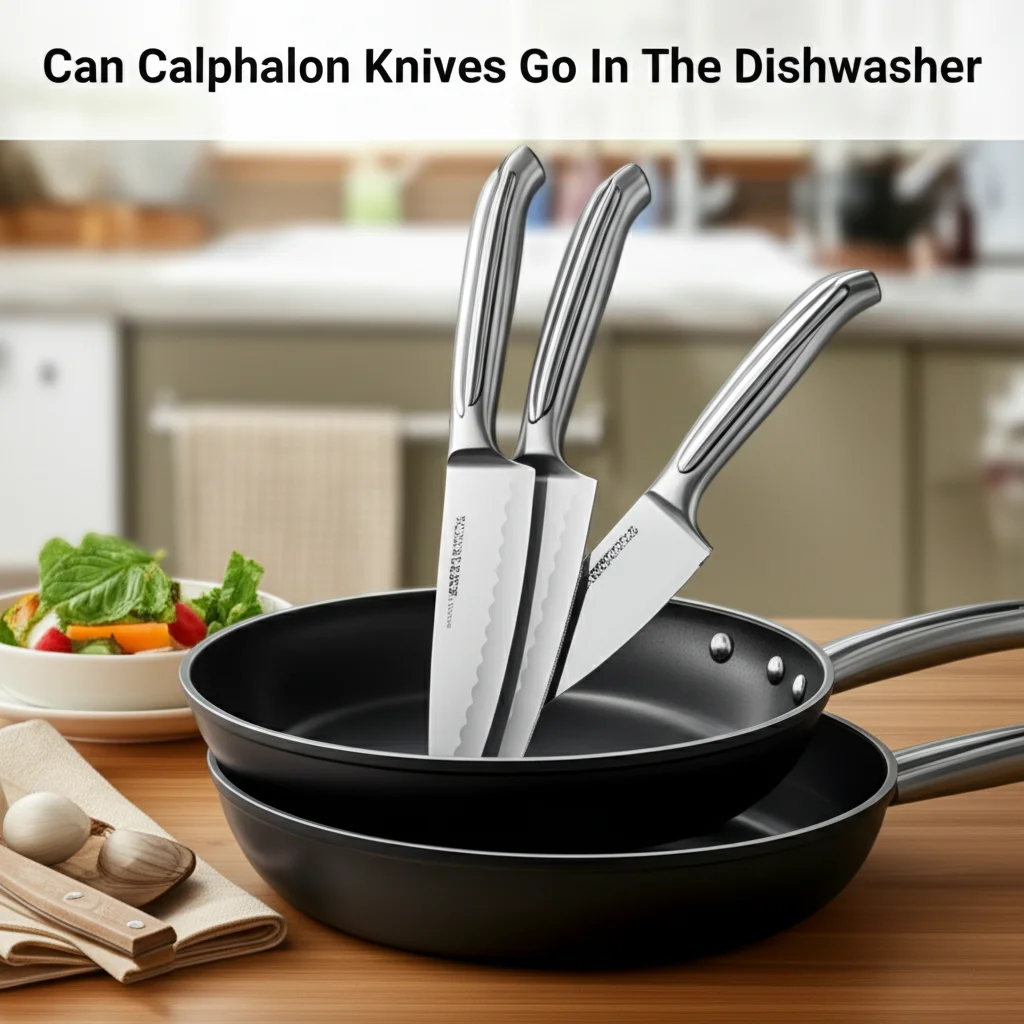· Katria Melrose · Laundry Appliances · 17 min read
What Is The Smallest Condenser Dryer You Can Buy

Finding the Smallest Condenser Dryer for Compact Living
Living in a small space often means making smart choices about appliances. For many of us, a traditional vented dryer is simply not an option. We might lack the outdoor venting access or the necessary floor space. This is where a condenser dryer becomes a hero. It offers a ventless drying solution, perfect for apartments, condos, or even tiny homes.
Many people ask, “What is the smallest condenser dryer you can buy?” Finding the most compact unit helps solve laundry challenges in tight areas. This article will help you identify the smallest options. We will also discuss their features, benefits, and important buying considerations. My goal is to help you find the perfect space-saving laundry appliance.
Takeaway
Finding the smallest condenser dryer involves looking at specific dimensions and load capacities.
- Dimensions are key: Look for units around 24-26 inches in width, 24-28 inches in depth, and 33-36 inches in height.
- Capacity matters: Small dryers often have 2.5 to 4.0 cubic feet drum sizes, fitting 5-10 pounds of laundry.
- Brands to consider: Specific brands specialize in compact models, often European.
- Ventless benefit: Condenser dryers do not need external venting, making them ideal for small spaces.
- Consider heat pump dryers: These are often even more energy-efficient and can also be very compact.
The smallest condenser dryers typically measure around 23.5 to 24 inches wide, 24 to 26 inches deep, and 33 to 34 inches high. These compact dimensions make them suitable for installation in tight corners or small utility closets. They often feature a drying capacity of 2.5 to 4.0 cubic feet, handling small to medium laundry loads effectively.
Understanding Small Condenser Dryers
Condenser dryers are a popular choice for homes without external venting. These machines work by heating air and passing it through wet clothes. The moisture from the clothes turns into steam. This steam then goes through a condenser. The condenser cools the steam, turning it back into water. This water collects in a removable tank. You simply empty the tank after each load. This design makes them incredibly flexible for placement. They can sit almost anywhere with a power outlet.
Many people appreciate the convenience of condenser dryers. They prevent hot, moist air from being pushed into your home, unlike some other ventless types. This helps manage indoor humidity levels. As someone who has lived in small apartments, I know how valuable space is. A condenser dryer provides a full laundry solution without needing complex ductwork. It fits into compact living arrangements well.
What is a Condenser Dryer?
A condenser dryer works differently than a traditional vented dryer. It recycles air inside the machine. First, the dryer heats air. This warm air then tumbles through your wet clothes. The heat causes moisture to evaporate from the fabrics. This moist, warm air then travels to a condenser unit.
Inside the condenser, the warm, humid air cools down rapidly. This cooling process makes the water vapor condense into liquid water. The water drains into a removable reservoir or a drain pipe. The now-dry air reheats and re-enters the drum. This cycle repeats until the clothes are dry. Because it reuses air and collects water, it does not need an external vent. This is why it is perfect for places where venting is not possible.
Why Size Matters for Dryers
In smaller homes, every inch counts. A large dryer can quickly overwhelm a tiny laundry nook or bathroom. This is why the size of your condenser dryer matters so much. A compact dryer allows you to maximize your living space. It fits into areas where standard appliances would not. Think about small apartments, RVs, or even a tight corner in a kitchen.
Choosing a small dryer means you can have the convenience of drying clothes at home. You avoid trips to a laundromat. This saves time and effort. Small units also tend to have lower energy consumption for smaller loads. This is beneficial for energy bills. My own experience taught me that a well-placed, compact appliance makes a huge difference.
Dimensions and Capacities of Compact Models
When you are looking for the smallest condenser dryer, dimensions are your main focus. Width, depth, and height all play a role. You need to measure your available space accurately. Remember to account for door swings and any necessary clearance. Beyond physical size, the dryer’s capacity is also important. This tells you how much laundry it can dry in one cycle.
Small condenser dryers aim to balance compact size with useful capacity. They are designed to fit into narrow spaces. However, they still offer enough drum space for everyday laundry needs. My advice is to always check the product specifications carefully. Manufacturers list all crucial measurements. This helps prevent any installation surprises.
Typical Small Dryer Measurements
Small condenser dryers often come in standard compact sizes. The width is usually the most important measurement for fitting into tight spots. Most compact units are around 23.5 to 24 inches wide. This narrow profile makes them suitable for closets or alcoves. The depth typically ranges from 24 to 28 inches. This allows them to sit flush with standard countertops or appliances.
The height of these dryers is usually between 33 to 36 inches. This height allows them to fit under counters or stack with compatible compact washers. Some models are even smaller, sometimes called “mini” dryers. These might be around 19-20 inches wide. However, these are less common for condenser technology. Always double-check the precise measurements before buying.
Load Capacity Explained
Even the smallest condenser dryer has a stated load capacity. This is measured in cubic feet. It indicates how much laundry the drum can hold. For compact condenser dryers, capacities typically range from 2.5 to 4.0 cubic feet. A 2.5 cubic foot dryer might handle about 5 pounds of dry laundry. This is enough for a small load of shirts or a few towels.
A 4.0 cubic foot model can manage a bit more, maybe 8-10 pounds. This is suitable for a couple’s laundry or small family loads. You should match the dryer’s capacity to your typical laundry needs. Do not expect to dry a king-size comforter in the smallest unit. For larger items, you might still need a laundromat. However, for daily clothes, a compact capacity is very convenient.
Identifying the Smallest Condenser Dryer Options
Finding the absolute smallest condenser dryer involves research. Many appliance brands offer compact models. However, not all compact dryers are condenser types. You need to look specifically for ventless models. European brands often specialize in smaller, more energy-efficient appliances. These are frequently condenser or heat pump dryers.
Online retailers and appliance stores are good places to start your search. Use filters for “compact,” “ventless,” or “condenser” dryers. Look at the product dimensions first. Then compare capacities and features. I found that reading user reviews also helps understand real-world size perceptions. They can confirm how well a unit truly fits in a tight spot.
Popular Compact Dryer Brands
Several brands offer reliable compact condenser dryers. Bosch is a well-known name in this category. Their 300 and 500 series compact dryers are often praised for their size and performance. Miele also offers high-quality, compact ventless options. These brands often produce units around 24 inches wide. They are designed for stacking with matching washing machines.
Other brands like Electrolux and Whirlpool sometimes have compact condenser models. However, their availability can vary by region. For the absolute smallest options, sometimes lesser-known brands or imported models appear. It is wise to check specialized compact appliance retailers. They often stock a wider range of truly small units. Remember to verify the specific model’s dimensions and condenser technology.
Integrated Washer Dryer Combos
For the ultimate space-saving solution, consider a washer dryer combo unit. These appliances combine both washing and drying functions in one machine. Many combo units use condenser drying technology. This means they are also ventless. They are often very compact, similar in size to a compact washing machine. A typical combo unit might measure around 24 inches wide, 24-28 inches deep, and 33-36 inches high.
While convenient, combo units have some considerations. They generally take longer to complete a full wash-and-dry cycle. Also, the drying capacity is often half of the washing capacity. This means you might need to dry smaller loads than you wash. However, for extremely limited spaces, a combo unit offers an all-in-one laundry solution. It is certainly a contender for the smallest footprint.
Advantages of Choosing a Small Condenser Dryer
Opting for a small condenser dryer comes with many benefits, especially if space is a concern. The main draw is their ability to fit into areas where traditional dryers cannot. This opens up laundry possibilities for many homes. Beyond size, these dryers offer other practical advantages. They are generally easier to install. Also, they can be more energy-efficient than some larger, older vented models.
From my personal experience, having a dryer at home, no matter how small, simplifies life. No more lugging wet clothes to a communal laundry room or laundromat. A compact unit provides independence. It makes managing everyday laundry much easier. Let’s look at the specific advantages more closely.
Ideal for Limited Spaces
The primary advantage of a small condenser dryer is its perfect fit for limited spaces. These units do not need an external exhaust vent. This removes a major hurdle for installation in apartments, condos, and small houses. You can place them in a bathroom, kitchen, or a small closet. This flexibility is a game-changer for urban living. I have seen them tucked under counters or stacked in tight corners.
Their compact size also allows for greater design freedom. You do not need to dedicate a large laundry room. Instead, you can integrate the dryer seamlessly into existing living areas. This makes compact condenser dryers indispensable for anyone trying to maximize their square footage. They offer functionality without demanding much space.
Installation Flexibility
Installation flexibility is a key benefit of condenser dryers. Since they do not require venting, setting them up is much simpler. You only need a standard power outlet. Some models also have a drain hose option. This allows the collected water to drain automatically, removing the need to empty the tank. This feature adds even more convenience.
This ease of installation is great for renters. You do not need to modify the building structure. You can simply plug in and go. For homeowners, it means more choices for appliance placement. You are not limited by existing ductwork. This freedom can save you money on installation costs. It also makes moving the appliance easier if you rearrange your space.
Energy Efficiency Considerations
Modern condenser dryers are becoming increasingly energy efficient. While traditional vented dryers expel heated air, condenser dryers recycle it. This can lead to less energy waste. Many compact condenser models also feature various drying programs. These programs optimize heat and time for different fabric types. This prevents over-drying and saves energy.
Look for models with energy efficiency ratings, like an Energy Star label. While not all small condenser dryers carry this specific label, many are designed with efficiency in mind. Compared to larger, older machines, a new compact condenser dryer can help reduce your electricity bill. This is especially true if you are mindful of load sizes. I recommend learning about how to clean your dryer regularly. A clean dryer works more efficiently and saves energy.
Important Factors Before Your Purchase
Before you buy the smallest condenser dryer, consider a few critical factors. You want to make sure the unit meets your specific needs. Size is important, but it is not the only thing. You should think about the power requirements of the dryer. Also, consider how noisy the machine will be. Maintenance needs are another important point.
Taking time to evaluate these elements ensures you make a smart purchase. A dryer is an investment for your home. You want it to perform well and last a long time. My advice is to list your priorities. This helps you narrow down choices more effectively.
Power Requirements and Installation
All dryers need electricity to run. Small condenser dryers typically run on a standard 120-volt outlet. This is different from many larger vented dryers that need a 240-volt outlet. The 120-volt requirement makes installation much easier. You can plug it into a regular wall socket. This means you do not need special wiring.
However, you should check the specific model’s power needs. Some compact units might still require a dedicated circuit. This prevents tripping breakers. If you plan to stack your dryer on a washing machine, ensure you have the correct stacking kit. Also, remember to factor in space for opening the door and accessing the water tank. You can learn about potential issues with your dryer like why is my condenser dryer saying water tank full to better understand maintenance.
Noise Levels and Features
Dryers make noise during operation. Small condenser dryers can be quieter than some vented models because they do not have a loud exhaust fan. However, noise levels vary by brand and model. If your dryer will be in a living area, look for models with a low decibel (dB) rating. Manufacturers often provide this information.
Consider other features too. Sensor drying automatically stops the cycle when clothes are dry. This saves energy. Different drying programs cater to various fabric types. A delay start option is useful for running the dryer during off-peak energy hours. Child lock features add safety. A larger water tank means less frequent emptying. Consider if you want to use the collected water, for example, can I use condenser dryer water in my iron.
Maintenance and Longevity
Regular maintenance helps your small condenser dryer last longer. The primary task is cleaning the lint filter after every load. This improves drying efficiency and prevents fire hazards. Condenser dryers also have a condenser unit that needs occasional cleaning. Lint and debris can build up there. This affects performance. Refer to your dryer’s manual for specific cleaning instructions.
You also need to empty the water collection tank after each drying cycle. If your model has a drain hose, ensure it is clear. Proper care prevents issues and ensures your dryer operates well for years. Choosing a reputable brand often means better build quality and easier access to spare parts if needed. This contributes to the appliance’s overall longevity.
Small Condenser Dryers vs. Heat Pump Dryers
When looking for a small, ventless dryer, you will often encounter two main types: condenser and heat pump. Both are excellent choices for compact spaces because neither requires external venting. However, they operate differently and have distinct advantages. Understanding these differences can help you decide which is best for your home.
I found that many people confuse these two technologies. While similar in their ventless nature, their energy consumption and initial cost can vary significantly. Let’s explore how they compare, especially concerning their suitability as the smallest available options. This comparison will help you make an informed decision.
Similarities in Ventless Operation
Both condenser dryers and heat pump dryers are ventless. This means they do not expel hot, moist air outside your home. Instead, they collect the water produced during drying. This water is stored in a removable tank or drained away. This shared feature makes both types perfect for apartments, condos, and other homes without external venting capabilities. They offer great installation flexibility.
Both systems also reuse the air inside the drum. This makes them more efficient than traditional vented dryers that constantly draw in new air and expel heated air. Their ability to operate without a vent is the core reason they are ideal for tight spaces. They eliminate the need for complicated ductwork. This simplifies setup and offers more placement options.
Key Differences in Efficiency and Cost
While both are ventless, heat pump dryers are generally more energy-efficient than standard condenser dryers. A heat pump dryer uses a heat pump to heat the air and cool it down. This system is a closed loop, meaning it reuses the heat more effectively. This results in significantly lower energy consumption. They often have higher energy ratings. For instance, you might want to learn about what is the smallest heat pump you can buy to see related applications of heat pump technology.
However, heat pump dryers often have a higher upfront cost than condenser dryers. They also tend to have longer drying cycles. Condenser dryers are usually more affordable to buy. They dry clothes faster. So, if budget is a main concern and you prioritize faster drying times, a condenser dryer might be better. If energy savings over time are your priority, a heat pump dryer is the better long-term investment. Both can be found in compact sizes.
FAQ Section
Q1: Can I stack a small condenser dryer on top of a washing machine?
A1: Yes, many small condenser dryers are designed for stacking. Manufacturers often offer specific stacking kits. These kits ensure the dryer sits securely on top of a compatible washing machine. This setup saves valuable floor space. Always check the dryer’s specifications and the washing machine’s compatibility before purchasing a stacking kit.
Q2: How often do I need to empty the water tank in a condenser dryer?
A2: You should empty the water tank after every drying cycle. This prevents the tank from overflowing and ensures optimal drying performance. Some models have a sensor that alerts you when the tank is full. Many condenser dryers also offer an option to connect a drain hose. This allows the water to drain automatically, removing the need for manual emptying.
Q3: Are small condenser dryers noisy?
A3: Noise levels vary by model and brand. Generally, condenser dryers are quieter than vented dryers because they lack a loud exhaust fan. However, they still produce some noise from tumbling clothes and the condenser unit. If noise is a major concern, look for models with lower decibel (dB) ratings. User reviews can also provide insights into real-world noise levels.
Q4: How much laundry can the smallest condenser dryer hold?
A4: The smallest condenser dryers typically have a capacity of 2.5 to 4.0 cubic feet. This usually translates to about 5 to 10 pounds of dry laundry. This is enough for small to medium loads, like a few pairs of jeans, a load of t-shirts, or several towels. They are ideal for individuals or couples.
Q5: Do small condenser dryers require special electrical outlets?
A5: Most small condenser dryers run on a standard 120-volt household electrical outlet. This makes them easy to plug into existing outlets. This is different from many larger dryers that need a 240-volt dedicated circuit. Always check the specific model’s power requirements in its specifications to ensure compatibility with your home’s electrical system.
Q6: Can a small condenser dryer dry large items like blankets?
A6: The smallest condenser dryers have limited drum space. They might struggle with very large, bulky items such as king-size comforters or thick blankets. These items need more room to tumble and dry evenly. While smaller blankets or throws might fit, for very large items, you might need to use a larger dryer at a laundromat.
Conclusion
Finding the smallest condenser dryer can truly change your laundry routine in a compact living space. These ventless machines offer a practical solution where traditional dryers cannot fit. We have explored how condenser dryers work and their ideal applications for small homes. We looked at typical dimensions, capacities, and popular brands that specialize in compact models.
Remember, the ideal smallest condenser dryer balances compact size with sufficient capacity for your needs. Always measure your space accurately and consider power requirements. Do not forget to factor in features, noise levels, and maintenance. Whether you choose a standalone compact condenser dryer or an all-in-one combo unit, you are investing in convenience and efficiency. Embrace the freedom of doing laundry at home, even in the tightest quarters. Take these insights and find the perfect compact appliance for your home today.





